In This Issue
- Tech Ideas at CES
- Virtual Reality Devices
- VR to See at CES
- Report from the CEO
- Oculus Rift Pre-Orders
- HTC Imagination VR
- Security Concerns
- Boost Cloud Adoption
- VZ: Go90 Doing Well
- Telefonica Big Data
- Huawei Partnerships
- Web-Scale Storage
- Containerization: Bold
- 10 Data Center Tips
- DHS on Cybersecurity
- 1M Cybersecurity Jobs
- Coming DCIA Events
Tech Ideas in Their Awkward Adolescence at CES
Excerpted from NY Times Report by Farhad Manjoo
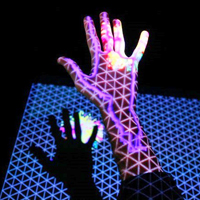 It’s a cliche for journalists to whine about International CES, the annual consumer electronics show that brings gadget-hounds and billionaires like a nerdy plague upon Las Vegas, NV this week.
It’s a cliche for journalists to whine about International CES, the annual consumer electronics show that brings gadget-hounds and billionaires like a nerdy plague upon Las Vegas, NV this week.
As many have complained — yours truly included — CES long ago devolved into a noisy parade of puffed-up announcements that usually amount to nothing.
But if news from CES feels especially desultory this year, it might not be the show that’s at fault.
Instead, blame the tech cycle.
We’re at a weird moment in the industry: the best new stuff is not all that cool, and the coolest stuff isn’t quite ready.
It’s not that today’s tech is terrible — lots of potentially groundbreaking ideas are just around the corner.
In product labs across the world, engineers and designers are working to turn a collection of annoying buzzwords — artificial intelligence, virtual reality, wearables, the “Internet of Things,” autonomous cars, and drones — into products that we find irresistible. They are all pushing the limits of what machines can currently accomplish… Read More
Virtual Reality Devices Rule CES 2016
Excerpted from Times of India Report
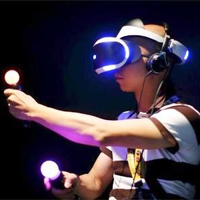 Following years of hype, 2016 looks to be the year that virtual reality (VR) actually becomes real as firms like HTC, Sony, and Samsung propose to launch equipment this year to make this possible.
Following years of hype, 2016 looks to be the year that virtual reality (VR) actually becomes real as firms like HTC, Sony, and Samsung propose to launch equipment this year to make this possible.
The HTC Vive, Sony’s PlayStation VR, Facebook’s Oculus “Rift” and Samsung’s “Rink” headset will be seen in the market in the next few months, BBC reported on Saturday.
Virtual reality is a computer-simulated reality (in a device) that replicates, via photos, an environment that simulates a physical presence in places in the real world or an imagined world, allowing the user to interact in that world.
Virtual reality artificially creates sensory experiences which can include sight, hearing, touch, and smell.
For example, with a VR device you can climb Mount Everest making your way gingerly across a shaky bridge while trying not to look down into an icy chasm — all while sitting on a couch in your house.
The devices are being showcased at the International Consumer Electronics Show (CES) held from January 6th to 9th in Las Vegas, NV.
The HTC Vive is seen as the device providing the best VR experience… Read More
Virtual Reality to See at CES 2016
Excerpted from Consumer Reports by Patrick Austin
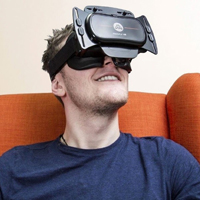 Consumer Reports is in Las Vegas, NV covering CES, the country’s largest tech expo.
Consumer Reports is in Las Vegas, NV covering CES, the country’s largest tech expo.
While there are a multitude of products, from drones to printers, virtual reality products are some of the most exciting ones.
You’ve probably heard of the major VR players Oculus, PlayStation, etc. But what about the other guys?
A new slew of VR toys is set to debut in 2016. Here are just a few things we expect to see.
If you think dropping a few hundred bucks is the only way to get into virtual reality, CES has your wallet covered.
There’s a flood of inexpensive VR headsets, many based on the Google Cardboard standard.
Cardboard is the popular headset Google introduced in 2014 to help popularize VR.
It employs the user’s phone and only costs a few dollars.
These offshoots will be compatible with most smartphones and support basic VR functions… Read More
Report from DCIA CEO Marty Lafferty
 2016 is emerging as the year that virtual reality will finally arrive.
2016 is emerging as the year that virtual reality will finally arrive.
Oculus Rift, purchased by Facebook in 2014 for $2 billion; HTC Vive Headsets, now partnering with game-maker Valve; and Sony PlayStation’s Morpheus, among others; are leading the consumer technology revolution at this week’s 2016 CES in Las Vegas, NV.
Virtual reality content now ranges from short live-action movies, showcased at VR Fest, to real-time sports video streams to videogames that immerse players in 360-degree experiences.
Oculus Rift’s successes announced this week include landing “Minecraft” and securing commitments from Netflix and Hulu to put their content on the platform.
Jaunt One is a camera being showcased at CES, built specifically to capture live-action, 360-degree content for virtual reality headsets. The innovative camera features 24 HD modules.
Indeed, numerous premium VR game titles are being readied for release throughout the year including cartoon adventure videogame “Lucky’s Tale” for Oculus Rift, the post-apocalyptic “Bebylon Battle Royale,” and a virtual reality version of “Rock Band.”
There are also inexpensive mobile headsets like Google Cardboard, IonVR, Merge VR, and Samsung Gear VR, all powered by smartphones, which in the future may be powerful enough to handle complex videogames now only available on premium headsets.
Displays will improve, sensors will get better, and graphical chips will get more powerful with every generation of mobile phones.
The delivery challenge of most importance to the distributed computing industry is Internet bandwidth, with current limitations meaning that fully immersive content still requires discs.
For live concerts and sporting events to overtake videogames and movie-like experiences — and reach their potential — technical innovation will be needed.
NextVR, which specializes in live-streaming sports for virtual reality, envisions headsets eventually coming down to the size of sunglasses.
The virtual reality industry can be proud of what’s been accomplished to date, and it’s reasonable to project that VR headset penetration will reach the millions by 2017 and a market exceeding $150 billion by 2020. Share wisely, and take care.
Oculus Takes Pre-Orders for Rift
Excerpted from USA Today Report by Edward Baig
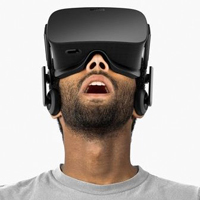 Virtual reality is one of the major themes at this latest CES. And few companies in the space are watched more closely than Oculus.
Virtual reality is one of the major themes at this latest CES. And few companies in the space are watched more closely than Oculus.
The Facebook-owned company announced that it will start taking pre-orders for the highly-anticipated Oculus Rift at 8:00 AM PT on Wednesday.
Folks who pre-order the headset at that time will also get Lucky’s Tale by Playful and CCP’s EVE: Valkyrie bundled free.
More specifics are available from Oculus Founder Palmer Luckey’s answers to questions on Reddit.
Meanwhile, though Oculus Rift is still on track to launch Rift as promised in the first three months of the year, the company announced a delay until the second quarter of the Oculus Touch controller.
Rift and other VR headsets can put you in a fully immersive virtual environment or place that would otherwise not be possible, maybe under the sea or on top of Mt. Everest.
Though much of the early action will be in gaming, virtual reality also has promise in travel, sports, and other fields… Read More
HTC Reshapes Imagination with Virtual Reality
Excerpted from Telecom TV Insights Report
 HTC, a pioneer in innovative smart technologies, today announced new developments to the Vive VR system that represent the next step in bringing virtual reality to a mass-market.
HTC, a pioneer in innovative smart technologies, today announced new developments to the Vive VR system that represent the next step in bringing virtual reality to a mass-market.
With Vive Pre, HTC is fulfilling the promise of creating fully immersive experiences that change how we communicate, how we are entertained, and how we learn and train.
Each and every component has been redesigned from the ground up to provide better comfort, ergonomics, and performance.
With milestone improvements in both visuals and versatility, Vive Pre creates a world without limits.
“When we first announced Vive ten months ago we had an ambitious goal of fundamentally changing the way people communicate and interact with the world – forever,” comments Cher Wang, Chairwoman and CEO, HTC.
“Since then Vive has received a phenomenally positive reception from media, industry commentators, consumers, and the hundreds of partners and brands we’ve been working with to deliver inspiring and dynamic VR content.”
“For too long, the promise of virtual reality has been little more than a promise… Read More
Security Concerns Stymie Consumer Technology Market
Excerpted from Telecom TV Insights Report
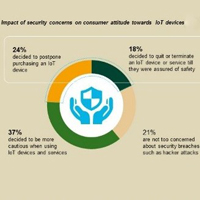 Heightened data security concerns, falling demand for smartphones and tablet PCs, and stagnant growth in the Internet of Things (IoT) market are stymieing the consumer electronics industry and will continue to do so over the next year, a new Accenture survey reveals.
Heightened data security concerns, falling demand for smartphones and tablet PCs, and stagnant growth in the Internet of Things (IoT) market are stymieing the consumer electronics industry and will continue to do so over the next year, a new Accenture survey reveals.
A polling of 28,000 consumers across 28 countries, the Igniting Growth in Consumer Technology survey finds that for nearly half (47 percent) of respondents, security concerns and privacy risks rank among the top three barriers to buying an IoT device and service.
IoT devices include smartwatches, wearable fitness monitors, and smart home thermostats, among others.
Of the survey respondents who indicated they either own or plan to buy an IoT device this year, nearly three-quarters (69 percent) said they know that these products are capable of being hacked and therefore can result in stolen data or device malfunctions.
Within the groups of IoT device owners or those planning to buy one in the next year, more than one-third (37 percent) decided to be more cautious when using these devices and services; 24 percent chose to postpone buying an IoT device… Read More
Security Will Accelerate Cloud Adoption in 2016
Excerpted from CloudTech Report by James Bourne
 A study released by Rackspace and conducted by Vanson Bourne argues improving resilience and security remain in the top three motivations for businesses moving to the cloud in 2016.
A study released by Rackspace and conducted by Vanson Bourne argues improving resilience and security remain in the top three motivations for businesses moving to the cloud in 2016.
The survey, which polled 500 UK IT and business decision makers, found reducing IT costs (61% of respondents) as the most popular reason for migration, ahead of resilience and disaster recovery (50%) and security (38%).
While these reasons have long since been considered when companies move data to the cloud, according to Rackspace Chief Security Officer Brian Kelly 2016 may represent a tipping point.
“Cloud has long been associated with a loss of control over information, but more and more businesses are now realizing this is a misconception,” he said.
“Organizations are increasingly seeing the cloud as a means to keeping their systems and information safe and in the year ahead security will be an accelerator, not an inhibitor, of cloud adoption.”
Part of this change is that security hurdles are becoming easier to clear.
Only one in five (20%) respondents said they encountered problems meeting security and privacy requirements… Read More
Verizon: Go90 Doing Well on Competitors’ Networks
Excerpted from Fierce Wireless Report by Ben Munson
 Verizon is only a few months into its official launch and marketing push around its mobile video platform Go90, but the carrier says the service is already performing well on its network as well as its competitors’ networks.
Verizon is only a few months into its official launch and marketing push around its mobile video platform Go90, but the carrier says the service is already performing well on its network as well as its competitors’ networks.
Marni Walden, President of Product Innovation and New Businesses at Verizon, said Verizon is optimistic with what it’s seen so far in terms of app downloads and audience connecting across multiple network platforms.
“And we like that because the main driver of revenue is advertising,” Walden said, speaking Wednesday at the Citi Internet, Media, and Telecommunications Conference in Las Vegas, NV.
Walden called the money coming in from advertising on Go90 an incremental revenue source for Verizon and said that the carrier is exploring other ways to monetize Go90, including data utilization and subscription tiers, including monthly or pay-per-view (PPV).
“Today Go90 is more of a retail strategy but there’s opportunity for further monetization through licensing or wholesale,” Walden said.
Right now, though, the focus for Verizon and Go90 is scale. Walden declined to comment on how a potential Yahoo acquisition could help… Read More
Telefonica & China Mobile Partner on Big Data
Excerpted from Developing Telecoms Report by James Barton
 China Unicom has formed a joint venture with Telefonica to offer big data services in its home market.
China Unicom has formed a joint venture with Telefonica to offer big data services in its home market.
The companies have stated that the new Smart Steps Digital Technology initiative will leverage “China Unicom’s stable and extensive basic telecommunication network and rich and market experience, as well as Telefonica’s mature technology in big data services such as Smart Steps.”
The Chinese operator will hold a 55% stake in the new entity — which will operate based on a “market-oriented mechanism” — while Telefonica will take the remaining 45%.
The venture marks the first time that Telefonica has deployed Smart Steps outside of its own footprint.
The tech is used to extrapolate and aggregate network data anonymously in order to deliver location-based insights.
Location and movement insight technology has many potential applications in China, including urban planning, public security, transport, risk management, retail analysis, and business consultancy. China Unicom noted that it hopes the venture will “further improve its deployment in the big data market”.
Telefonica meanwhile has stated its intent to “access to the tremendous potential of the big data market of China… Read More
Huawei Highlights Industry Partnerships at CES 2016
Excerpted from Huawei Press Announcement
 As part of its announcements at CES 2016, the Huawei Consumer Business Group shared the details of a slate of partnerships that will create a new consumer ecosystem in mobile, bringing together the best in technology, payment, sound, and fashion in its newly launched consumer electronic devices.
As part of its announcements at CES 2016, the Huawei Consumer Business Group shared the details of a slate of partnerships that will create a new consumer ecosystem in mobile, bringing together the best in technology, payment, sound, and fashion in its newly launched consumer electronic devices.
At its press conference today, Huawei showed that through partnerships with the leading companies of certain industries, premium devices, and experiences can be created for consumers that extend beyond technology.
These partnerships represent Huawei’s commitment to working together to create the high-quality devices that reflect the wants and desires of an increasingly savvy and selective consumer market.
“Through the different types of devices Huawei creates, we are convening a new mobile ecosystem of partners that bring together the best in technology and lifestyle design.”
Together, we create a premium audio experience with Harman/Kardon: people using Huawei’s M2 Tablet will have an opportunity to enjoy the rich sonic experience of Harman/Kardon, as the result of a new partnership that integrates that company’s leading audio technology into the 10-inch tablet… Read More
Web-Scale Storage: It’s Not All about Size
Excerpted from IT Business Edge Report by Arthur Cole
 Bigger and faster. Those two words will be the running theme for storage infrastructure in the coming years as the enterprise steps up to the demands of Big Data, collaboration, and other advancing initiatives.
Bigger and faster. Those two words will be the running theme for storage infrastructure in the coming years as the enterprise steps up to the demands of Big Data, collaboration, and other advancing initiatives.
But even though these two goals are relatively clear-cut, determining exactly how they are to be accomplished is still in limbo, with the biggest question remaining: Where should the bulk of storage infrastructure reside, at home or in the public cloud?
The ramifications of these decisions are already playing out in the vendor community in the form of continued consolidation.
Following the much publicized merger between Dell and EMC late last year, NetApp announced an $870 million purchase of Flash developer SolidFire.
Not only does this bring a scale-out, all-Flash array into NetApp’s portfolio, it also provides advanced data management and software-defined storage capabilities that will allow the company to compete more firmly for the highly dynamic data architectures that are taking hold in the enterprise and in the cloud.
NetApp is already targeting web-scale applications and the rising tide of DevOps functions that are poised to remake IT architecture… Read More
Containerization: The Bold Face of the Cloud In 2016
Excerpted from CloudTweaks Report by Jeremy Daniel
 “Right now, the biggest technology shift in the cloud is a rapid evolution from simple virtual machine (VM) hosting toward containerization’‘ says the CTO of Microsoft Azure, Mark Russinovitch, a man who deals with the evolving cloud infrastructure every day.
“Right now, the biggest technology shift in the cloud is a rapid evolution from simple virtual machine (VM) hosting toward containerization’‘ says the CTO of Microsoft Azure, Mark Russinovitch, a man who deals with the evolving cloud infrastructure every day.
In his words, containerization is “an incredibly efficient, portable, and lightweight cloud technology that saves significant operating system overhead costs and dramatically improves application time-to-market.” Increasingly, it’s becoming the standard when it comes to cloud-based apps.
While cloud computing has been a buzzword in business circles for years, it’s only recently that it has crossed over into the public domain, to the extent that many are hailing 2016 as The Year of the Cloud.
More and more organizations are relying more and more heavily on this sophisticated technology that provides efficiency and flexibility across the web.
The cloud has evolved to respond to this surge of interest, and the lines between PaaS and IaaS have begun to blur. Russinovitch explains that “this “blurring” is important as more things are moved to the cloud… Read More
Ten Tips to Secure the Data Center
Excerpted from CIO Insight Report by Karen Frenkel
 Securing a data center can be challenging for a variety of reasons.
Securing a data center can be challenging for a variety of reasons.
You can’t secure what you don’t see, for example, and almost everything has remote access capabilities and IP addresses to interface with the web.
Too often, security takes a backseat, which leaves hundreds of embedded and low-level management systems vulnerable.
Another problem: communication can either create or control vulnerabilities.
How to secure the Internet of Things (IoT) is a burning question today.
Machines communicating with each other may be more efficient, but they can be even less secure than humans communicating online.
“We live in a hyper-connected world where IT Infrastructure visibility and access are critical to business success,” said Jay Wirts, General Manager, Avocent Core Products at Emerson Network Power, a provider of critical infrastructure technologies and life-cycle services for information and communications technology systems… Read More
DHS Think Start-Ups Know How Best to Protect the IoT
Excerpted from NextGov Report by Mohana Ravindranath
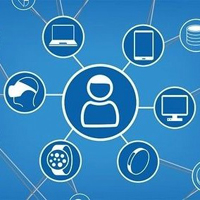 The Department of Homeland Security (DHS) wants to be able to detect all devices connected to its network in a particular location — say, an airport — and it thinks start-ups will know how to do it.
The Department of Homeland Security (DHS) wants to be able to detect all devices connected to its network in a particular location — say, an airport — and it thinks start-ups will know how to do it.
DHS is looking for companies whose technology can not only detect devices and sensors, but can also verify and authenticate them, prevent spoofing and update devices’ security systems.
Ideally, the system wouldn’t disrupt other devices, map out the location of those devices, and would be easy to handle for nontechnical users.
The burgeoning Internet of Things (IoT) — a term for the increasingly connected network of computers, sensors and devices — allows “any IoT system to be connected to any other device on the Internet,” DHS noted in a recent call for technology applications.
While connectivity can sometimes be helpful, it “also allows every node, device, data source, communication link, controller and data repository… to serve as a security threat and be exposed to security threats” especially because they’re often connected to autonomous, distributed, and even physical systems… Read More
One Million Cybersecurity Job Openings In 2016
Excerpted from Forbes Report by Steve Morgan
 If you are thinking about a career change in 2016, then you might want to have a look at the burgeoning cybersecurity market which is expected to grow from $75 billion in 2015 to $170 billion by 2020.
If you are thinking about a career change in 2016, then you might want to have a look at the burgeoning cybersecurity market which is expected to grow from $75 billion in 2015 to $170 billion by 2020.
A knack for cat-and-mouse play may indicate that you have an aptitude for cybersecurity. It is a field where the good guys — cybersecurity professionals — are pitted against the bad guys — cyber-criminals a.k.a. hackers.
Assuming you’d want to be a good guy — a career can mean a six-figure salary, job security, and the potential for upward mobility.
More than 209,000 cybersecurity jobs in the US are unfilled, and postings are up 74% over the past five years, according to a 2015 analysis of numbers from the Bureau of Labor Statistics by Peninsula Press, a project of the Stanford University Journalism Program.
A report from Cisco puts the global figure at one million cybersecurity job openings.
Demand is expected to rise to 6 million globally by 2019, with a projected shortfall of 1.5 million, says Michael Brown, CEO at Symantec, the world’s largest security software vendor… Read More
Coming Events of Interest
Industry of Things World USA — February 25th-26th in San Diego, CA. A new international information exchange forum featuring four concurrent tracks covering business model generation, technology and infrastructure, data management, and security.
IoT Asia 2016 — March 30th-31st in Singapore. IoT Asia returns in 2016 with fresh insights on Internet of Things (IoT) developments around the world. The 3rd edition aims to further advance conversations and ideas on IoT and how it will impact our lives by delving into the real issues.
Delivery of Things World — April 25th-26th in Berlin, Germany. DevOps specialists, continuous development strategists, architect newbies, development geeks, and cloud geniuses from across the spectrum of DevOps transformation come together at this stimulating and innovative event.
DataCloud Europe 2016 — June 8th-9th in Monte Carlo, Monaco. The 2016 conference will focus on cloud computing advances and changes in data management, with a stellar line-up of speakers including global infrastructure leaders and subject matter experts.
Cloud and DevOps World Forum 2016 — June 21st-22nd in London, England. Now in its eighth year, C&DWF is firmly established as the leading content-led exhibition for the European Cloud and DevOps community and the premiere meeting place for CIOs.
Security of Things World — June 27th-28th in Berlin, Germany. Topics include securing cyber physical systems for IoT, expanding IT security with intelligence-led ops, business continuity management considerations, data privacy in an interconnected world, and security strategies.
Industry of Things World Europe — September 19th-20th in Berlin, Germany. IoT business models, new IoT markets and strategies, product lifecycle management, next generation data handling and value assessment, IoT organizational impacts, and IoT security issues.
